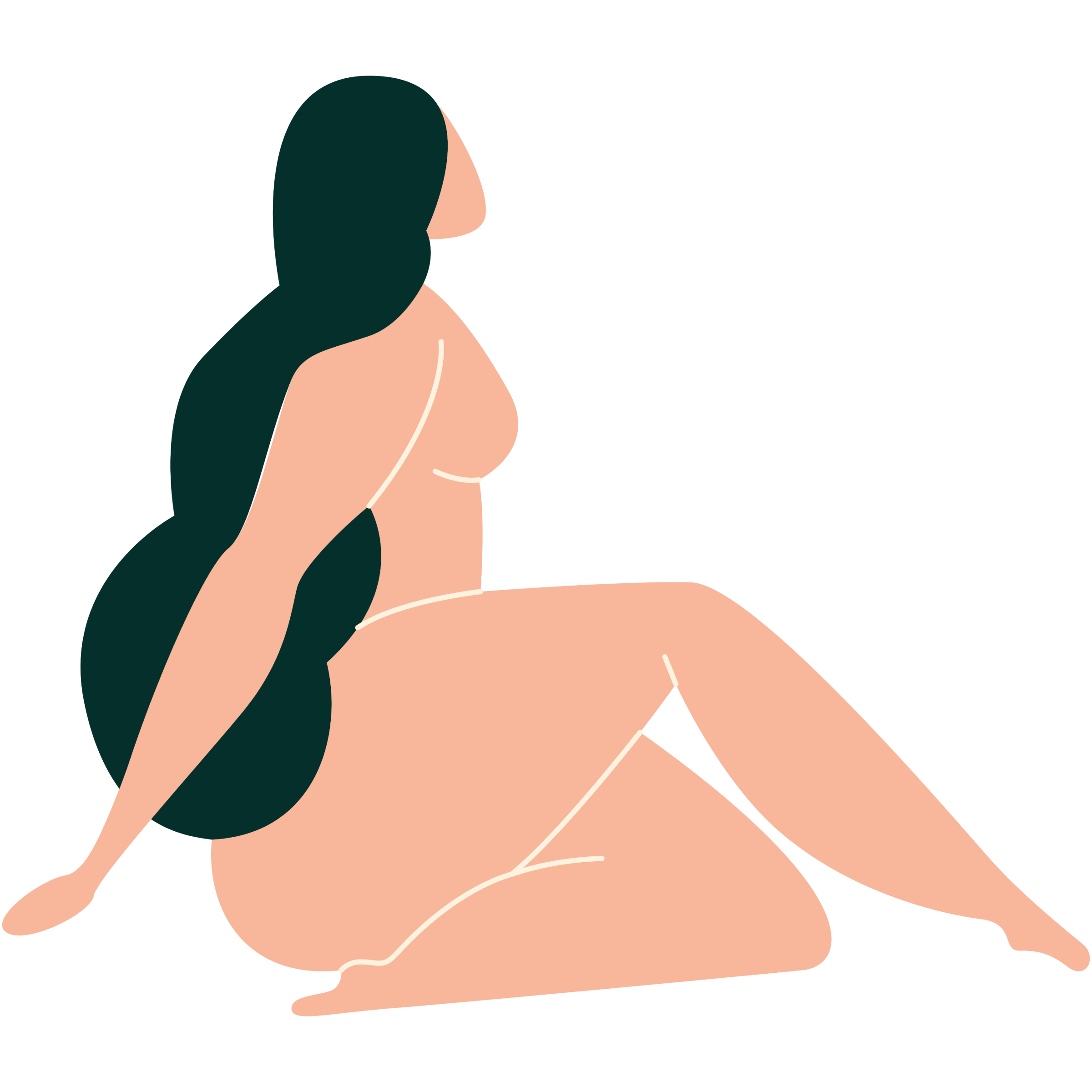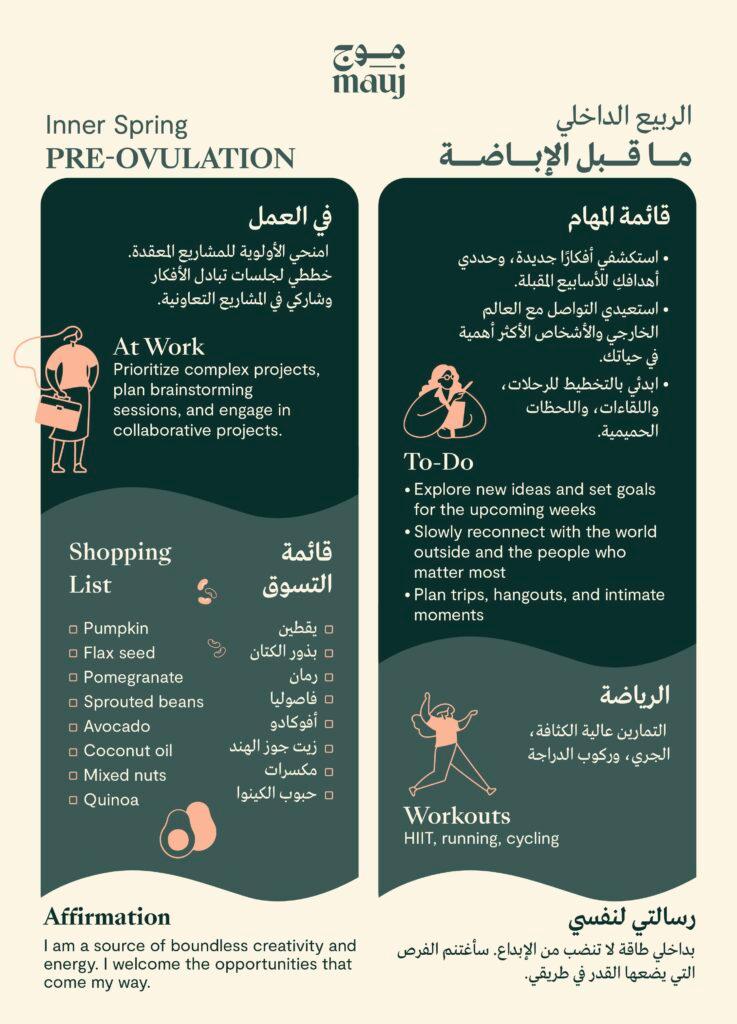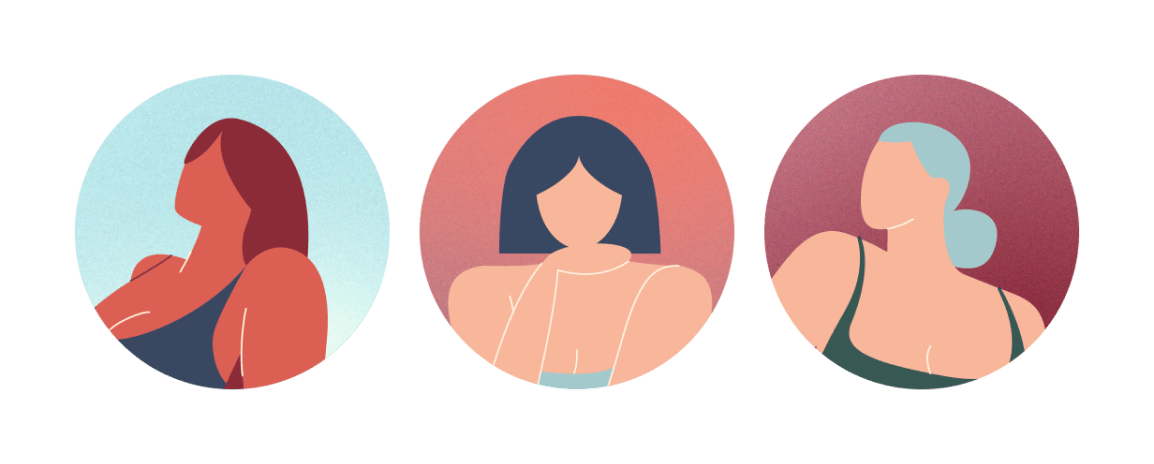
Body
Get to know your body through a better understanding of your anatomy and find the answers to some of your most common questions.

Welcome to the second installment in our series on the different stages of the menstrual cycle. In this resource, we’re diving deeper into the second stage – pre-ovulation or your Inner Spring. We'll be breaking down what happens and how it affects your body and sharing tips to help you navigate this time of the month.
This phase typically starts around day 7 and lasts until day 14 in an average cycle of 28 days, or right after your period.
Estrogen takes center stage, rising steadily as your body prepares for ovulation and a potential pregnancy.
Your Inner Spring, or the pre-ovulation phase, marks a period of increased estrogen levels, which is how your body prepares for a potential pregnancy.
During this time, you’ll notice cervical mucus resembling egg whites, which can make it easier for sperm to travel up to your uterus. As the ovaries prepare to release an egg, you might also notice slight pelvic discomfort or twinges known as ovulation pain (scientifically known as mittelschmerz).
Some women experience breast tenderness or swelling as a result of hormonal changes. During this phase, your sex drive is on the rise due to increasing estrogen levels.
Many women experience a surge in energy levels. The key, however, is to approach this newfound energy gradually and with a sense of ease. Move tenderly and allow yourself the time and space to get back into your routine.
The combination of increased energy and hormonal balance often results in a more positive and upbeat mood. You may find yourself feeling more optimistic and open to new experiences.
Mental clarity and focus tend to be at their peak during your Inner Spring, and you’ll find yourself able to concentrate better and be slightly more productive.

Our hormones do more than just regulate our reproductive system; they're powerful influencers of our daily experiences, affecting everything from our mood to our creative energy. By recognizing these hormonal patterns, we can make more informed decisions about when and how to nourish and move our bodies throughout our cycle.
Consider these suggestions for working in harmony with your body's natural rhythms during this phase.
Self
The Inner Spring brings a lot of excitement and anticipation. You might feel a boost in your romantic energy, noticing that you find others—and even yourself—more attractive. You may also feel inspired to come up with new ideas and plan fun projects.
Relationships
In this season, you naturally find yourself reconnecting with the world outside and the people who matter most—your partner, family, and friends. Start to plan trips, hangouts, and intimate moments.
Work
Your ability to brainstorm and be creative is high, so prioritize complex projects that you may have put aside during the menstruation phase. Plan brainstorming sessions and engage in collaborative projects. Take advantage of your increased learning capacity by acquiring new skills through workshops or online courses.
Exercise
You can begin working up more of a sweat, as your testosterone and estrogen are on the rise again. Start gradually and don’t go from 0 to 100 in one go. More intense exercise will start to feel good, including workouts like running, dancing, heavy lifting, and pilates.
Food
Stay hydrated to support your body's various functions, especially as you may become more active. Eat food that will help balance your hormones, like pumpkin, flax seeds, pomegranates, and sprouted beans. Toss in some healthy fats from avocados, coconut oil, and nuts.
Just like your fingerprint, your menstrual cycle has its own unique pattern. Take time to understand your body's rhythms and adapt your wellness practices to what feels right for you. Whenever you're unsure about changes or symptoms, healthcare professionals are there to provide expert guidance and support.
Did you find the answer you were looking for? Is there something we missed? What did you think of this resource? We want to hear from you.
